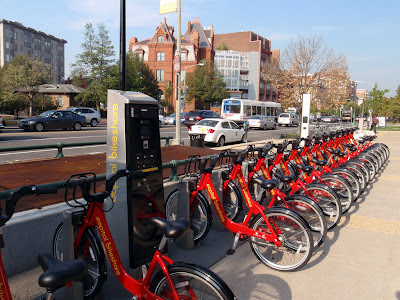Although hopefully this blog will grow as a resource/meeting place for people who are interested in promoting complete streets in the area, it’s actually not the first Grand Forks blog to bring up streets-oriented issues. Grand Forks Life, a blog that stopped being updated in 2009 (but is still up), had a number of posts on the topic:
- More on that railroad redevelopment… (February 14th, 2009)
- If you had $100 million… (October 25th, 2008)
- Retail on a dead-end street? (March 2, 2008)
- The streets of 2035 (September 21, 2007)
- A bigger and better downtown (April 10, 2007)
-
The state of our city’s streets (March 25, 2006)
- More downtown housing (February 8, 2006)
Another area of discussion was the blog of Grand Forks Herald reporter Tu-Uyen Tran, The City Beat, which has not been updated since October 2010. Tran is notorious for his attention to detail, not lacking in these relevant posts:
- More costs ahead for downtown GF parking ramps (September 3, 2009)
- Green Street in downtown GF? (August 18, 2009)
- Street repairs for GF (January 14, 2009)
- A softer, less nerdy City Beat (August 11, 2008)
- The futility of speeding tickets (April 15, 2008)
- Roads, ramps and traffic signals (September 24, 2007)
- Finally, cameras in the parking ramps (May 14, 2007)
Unfortunately, a few years have gone by without any investigative blogging on the Grand Forks street scene, but this past coverage might give you an idea for what we should be thinking about right now and how things have changed–or stayed the same.
If you think we’ve missed a great post from another blog, or a great discussion in the local media, drop a link in the comments.


